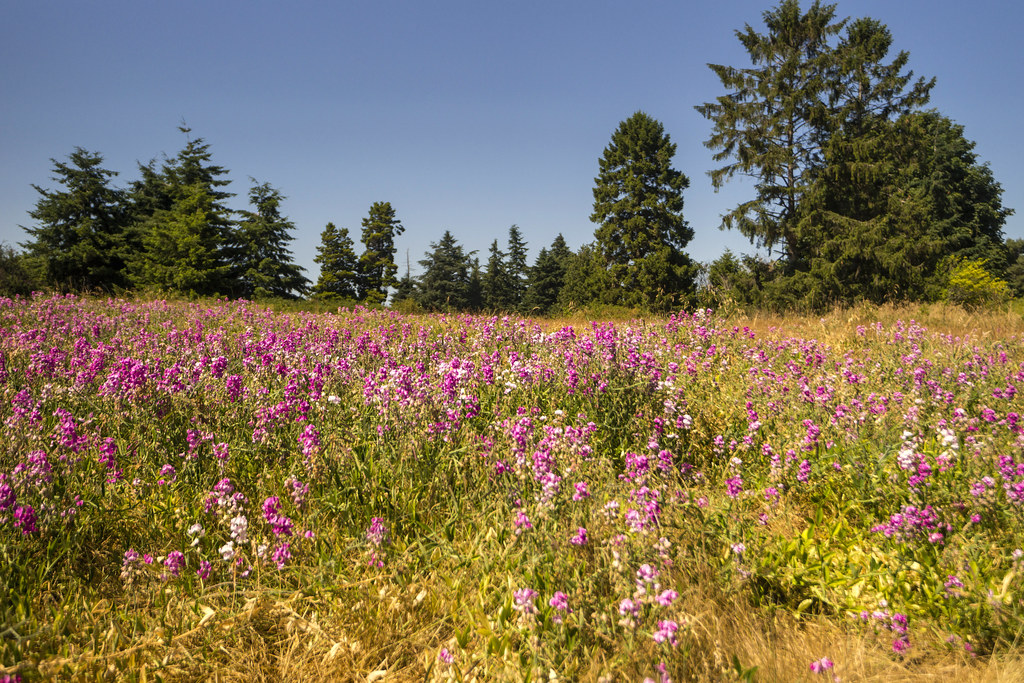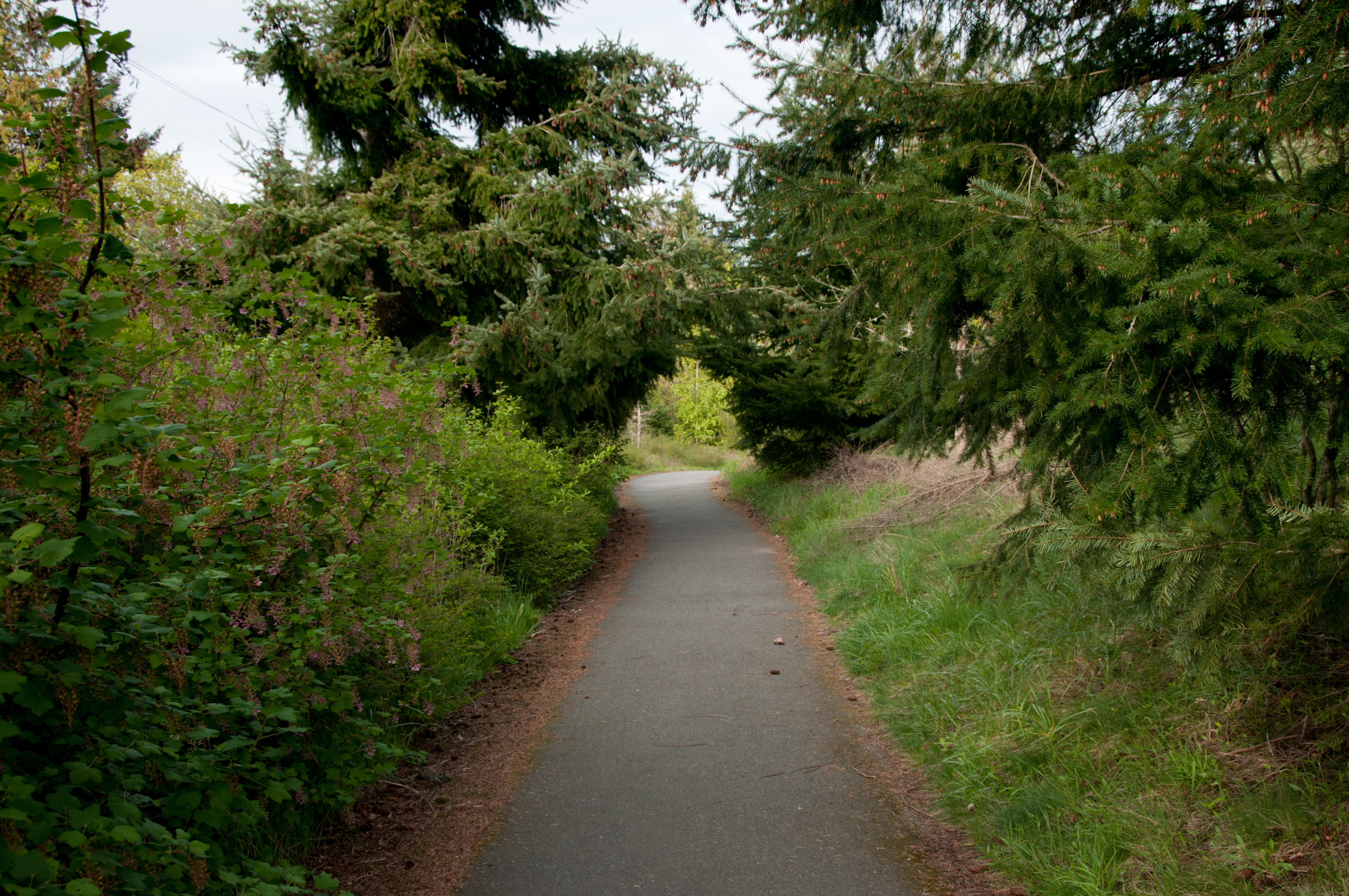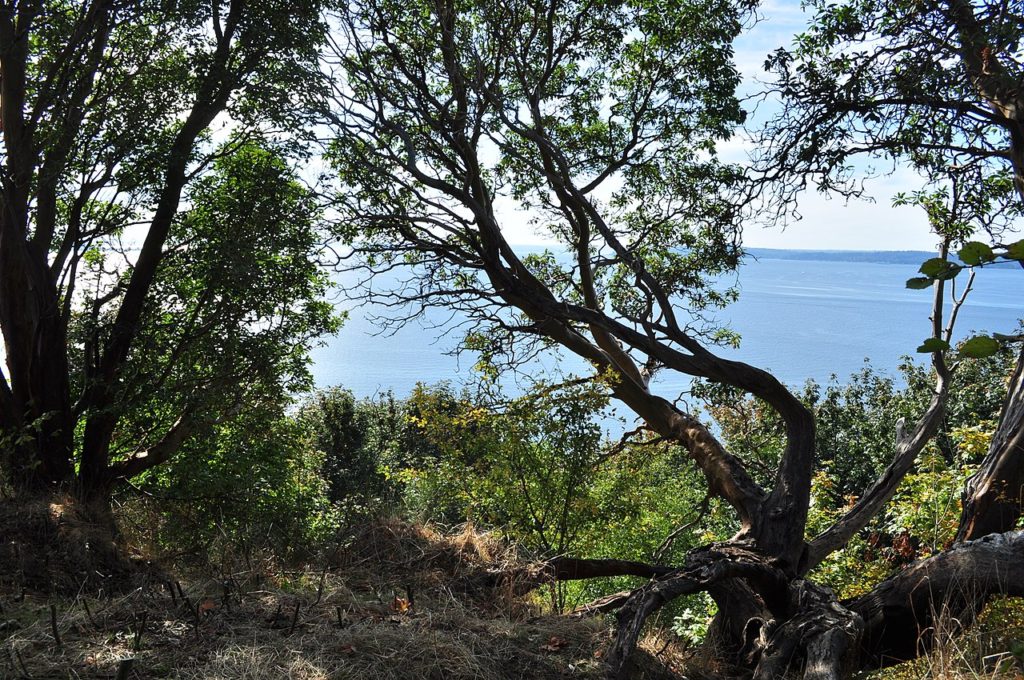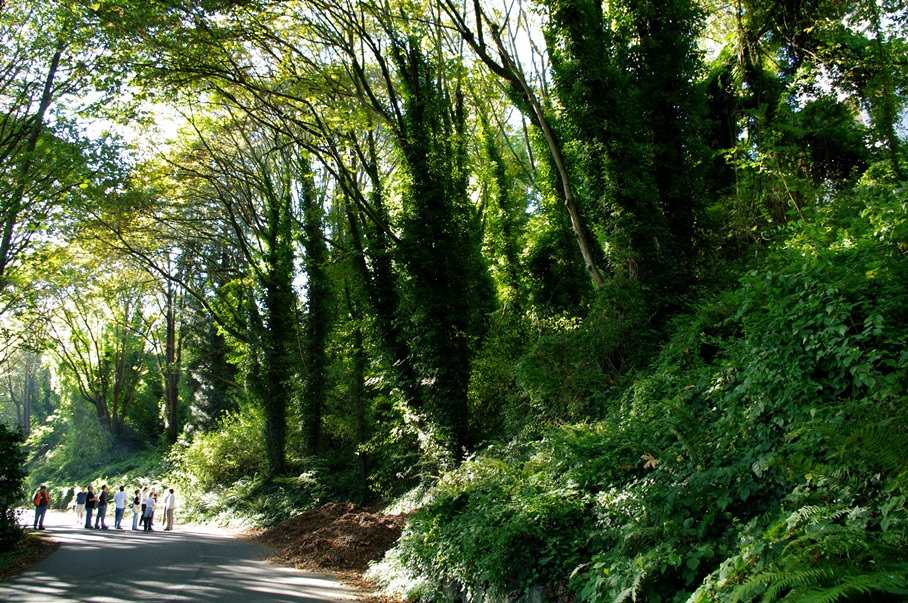
Recently I had the pleasure of sitting down with Elizabeth Lev, who co-authored the recently published paper, “Relatively Wild Urban Parks Can Promote Human Resilience and Flourishing: A Case Study of Discovery Park, Seattle, Washington.” This sparked immediate interest for us at the Green Seattle Partnership (GSP) for a number of reasons. First, it explores a park that we know, love, and frequently hold volunteer events at. Second, it gives teeth to a long-held notion of environmentalists and park enthusiasts everywhere—that large, wild natural areas are important! Of course, it’s not quite as simple as that. This is a well-written and thought out piece that requires a bit of unpacking to fully understand. Let’s get to it.
Q. What led you to this research? You can go as far back as childhood or early education, or just start with how this ended up becoming your thesis.
I grew up in Los Angeles, in the city, and so I personally never had much experience with the kind of nature I talk about in this research. Everything was very small, and you know…LA. I moved to Seattle for undergrad at UW, and the difference between Seattle and LA was just astonishing to me. Overtime I began to feel better just by virtue of being in Seattle, where there’s so much big nature in the city.
When I moved I didn’t even know that fields like environmental psychology or eco-psychology existed. Then I took a class called eco-psychology with my advisor (who is the second author on the paper), I thought—“whoa”—this is where all of my interests collide! I can really study the psychology behind environmental problems, with the intention of making the world a better place for both nature and people. UW is one of the few universities with such a strong faculty collection that does this kind of research, so I stuck around here to get my masters.
One day our lab was approached by Garrett Esperum, who is a board member on the Discovery Park Advisory Council, and is also the fourth author on the paper now. Garrett—a Seattle local who loves Discovery Park—has witnessed over the years that Discovery Park is constantly the subject of various proposals for urban development within the park. When he approached us he was hoping to find research that would help push back against developers, and support the idea that more wild areas are important to our community and to public health. When faced with pressures to develop—to meet the growing demands of a quickly developing city—people will look at undeveloped open space and see it as potential for serving the community in some good way. What they don’t see is how that space in its current state is actually benefitting the community.
So when Garrett approached us, we heard his concern, and we saw it as an opportunity to apply a new research methodology. The methodology—known as Interaction Pattern Analysis—would enable us to characterize how people are using the space and apply numbers to those characterizations. People only trust research that has numbers!

“Discovery Park is constantly the subject of various proposals for urban development within the park”
Q. I read somewhere that this is the first study to show that wildness in urban areas is important to human well-being. Would you characterize it that way? Was it difficult when you were doing this kind of research to not have similar research to help build out your hypotheses?
I would be hesitant to say that this is the first study to show that wildness is important. I’m sure it has been done in much smaller case studies, like wilderness therapy. In our study we’re working at a larger scale (an urban park), and without the intention of developing a therapy or anything like that.
I wouldn’t say it was more difficult to work without foundational research, but it was definitely a fun challenge. We had a lot of literature to draw from in terms of environmental philosophers, advocates, activists and the like. There’s a lot of discussion about the benefits and value of nature, but without the empirical component to back it up. So we drew on the more theoretical language, but we wanted to put our own spin on it, and also make it relevant to Discovery Park. Our definition of wildness is generalizable, but is definitely tailored to the kind of nature at Discovery.
Q. Just so we’re all on the same page, what are the key pieces to defining wildness?
We describe 7 main factors that contribute to relative wildness.
- Large, Open Space.
- Big nature, which can mean a big tree, or something like the Puget Sound.
- Varied and relatively unmanaged landscapes.
- Vistas are something we are quickly losing in the city as we urbanize. We discuss how the experience of gazing out has deeper evolutionary roots and more profound meaning.
- Biodiversity is one that many think of as the main measure, but in the context of something like say, the Amazon Spheres, might not be described as wild.
- Quietness and separation from urban noise.
- Solitude in the sense that you are able to get away from other people.
Q. Were these factors defined entirely based on the accounts you got from park users? Or was some of it driven from what you were looking for as researchers?
It was both. We have our background knowledge of how other people have been defining wildness. In these accounts they talk a lot about big nature, biodiversity, and unmanaged landscapes, so we know those would probably be important factors. When I would go back and look at the data, I confirmed that these factors were being talked about by participants, and I also found more features from the data that added to the overall definition.
Q. You’ve mentioned pushing back against the emphasis that modern research has on smaller urban nature—like research that says street trees are good for human health—why is that? Why emphasize wildness nature over urban nature?
We do all agree that research on the benefit of street trees or neighborhood trees on human health is good. Some people don’t even have access to urban nature in that format, and it’s important to establish that it’s important to have that access. However we’re also concerned with the idea of environmental generational amnesia and the shifting baseline problem in the context of the human relationship with nature. More and more the public discussion of what counts as “good enough” nature is shifting to focus on urban nature. Children are coming of age in diminished, or more urbanized environments, and are constructing their vision of healthy nature from degraded habitats. They don’t know what they’re missing because they aren’t getting direct experience with more wild forms of nature. We think this is  manifesting in the problems Discovery Park is facing. Without direct experiences, many people aren’t seeing the value of wild nature, and are ultimately seeing these wild areas as wasted space. When wild spaces are developed, it furthers the cycle as access to wild nature experiences is decreased. The baseline of what we view as normal keeps shifting towards degraded nature, all without people realizing it since it’s happening over generations.
manifesting in the problems Discovery Park is facing. Without direct experiences, many people aren’t seeing the value of wild nature, and are ultimately seeing these wild areas as wasted space. When wild spaces are developed, it furthers the cycle as access to wild nature experiences is decreased. The baseline of what we view as normal keeps shifting towards degraded nature, all without people realizing it since it’s happening over generations.
A way to counter this is by rewilding our interactions and our cities. We want to say that we are a part of nature, but there’s a difference between forms of nature. We define nature as a spectrum from wild to domestic, in part so that people have the vocabulary to discuss and understand nature. Without this understanding, the cycle of generational amnesia deepens, because we no longer have the words to distinguish the domestic from the wild. And while street trees are important, if we don’t distinguish them from wild areas, there’s a very real possibility we could lose those wild areas as we focus too much on urban nature. We don’t want it to get to that point, we want people to see the benefits of wild nature well before we’ve lost it.

“Children are coming of age in diminished, or more urbanized environments, and are constructing their vision of healthy nature from degraded habitats”
Q. Is there a threshold for what is wild and what isn’t?
We get that question a lot. People want to be able to measure the difference in benefits between a wild space and a non-wild space. But we’re trying to get away from that binary, and instead define things along a spectrum. That’s what the “relative” part of “relative wildness” refers to. We don’t have a threshold, but we do feel that more wild will always be better than less wild. Make areas as wild as you can given the constraints, and try to push back against those constraints too. But a smaller community park with a playground and lots of open grass is still more wild than a heavily urbanized environment. This is especially important when we consider what kinds of access different people have to nature.
Q. I’ve noticed that smaller, less wild community parks tend to be important spaces for socializing. On the other hand, quietness and solitude are two of the defining features of relative wildness. Do you see community spaces and wildness as compatible, or separate?
No one has ever asked us that before! I think that wild spaces can offer “all of the above.” One of the affordances of big nature is that you can have access to quietness and solitude, but also in other areas have room for gathering. Discovery does a great job of balancing those. You can go down to the forest or to the beach and find solitude. But there are also places like the parade ground which is a major gathering  spot in the park (and also subject to a lot of development proposals because of all the open space). Community gathering in a way is a feature of the park’s wildness because the large, open space is affording a community space. Nature often makes us feel more connected to the people around us. We found themes across our participants’ responses, and two were about socializing. One was generating new social relationships, and the other was deepening existing social bonds. A lot of people found that it was easier to spark up a conversation on the trail, as opposed to the city where we often don’t even make eye contact with each other. Wild nature doesn’t always have to be a solo journey. It’s important to have access to solitude, but there’s also something special about better connecting with the people around you.
spot in the park (and also subject to a lot of development proposals because of all the open space). Community gathering in a way is a feature of the park’s wildness because the large, open space is affording a community space. Nature often makes us feel more connected to the people around us. We found themes across our participants’ responses, and two were about socializing. One was generating new social relationships, and the other was deepening existing social bonds. A lot of people found that it was easier to spark up a conversation on the trail, as opposed to the city where we often don’t even make eye contact with each other. Wild nature doesn’t always have to be a solo journey. It’s important to have access to solitude, but there’s also something special about better connecting with the people around you.
Q. Do you see this research as a call to action? Who are the main people you want this work to speak to?
I feel like that answer would be different depending on which author of the study you ask. I think that speaks to how big of an impact we think this research can have. Garrett wants this work to help keep Discovery Park out of the hands of developers. My adviser Peter has very global hopes, and is very concerned with the generational amnesia problem. It’s a call to action for everyone, because we’re speaking on both the policy level and the individual level. We want policy makers to see that there are uses for wild spaces that maybe they hadn’t seen before. On the individual we’re trying to rewild ourselves, and push back on the problem of environmental generational amnesia. Another global problem is the idea of human domination over nature, which I think stems from Western and Capitalist influences. We think this mindset of domination is promoting different kinds of problems and oppressions in both the social and environmental realms. Our hope is that increasing interactions with wild nature will foster more relational mindsets, as opposed to interacting with more domestic or mediated nature. There are so many implications of this research, and we want people to grapple with all of them. Go beyond just addressing policy and look inward to challenge and expand their notions of nature.
Q. So will maintaining or expanding access to wild nature help us deconstruct this colonial/capitalist relationship to nature? Is there other work we need to pair with protecting wild nature to make that change?
I definitely think it’s not enough to just expand access to relatively wild space. It’s also not enough to just interact with relatively wild nature. A typical attack on the value of interacting with wild nature is the example of loggers, who are out in wild nature and yet are clearcutting a forest. There are definitely instances where people can uphold colonialist norms while still interacting with wild nature. At a minimum we need to pair this kind of work with history. I did that in my thesis by having the whole first half talk about the colonial history of Discovery Park, which people don’t talk about at all. It’s difficult because people don’t necessarily have the intention of perpetuating colonial mindsets, but it’s deeply ingrained in our system. We’re not even acknowledging how Discovery Park’s creation was a result of the forced removal of Duwamish peoples from that land, before it was turned into a military base. The history we see on the City’s webpage or elsewhere tends to start at the creation of the park, but it ignores the violent history. Acknowledging that history is the first step in changing our relationship with these spaces.
Q. How do you see the role of invasive species in the definition of relative wildness? Is a vine-covered forest or a blackberry dominated shrubland relatively wild still?
We’ve been talking a lot about this as we move to design spaces in which people can have more interactions with wild nature. My first instinct is that invasive species are bad! But the word invasive doesn’t seem right to me because it’s resistant to change; it says this one  state is the right state and anything else is wrong. Thinking back to class, an invasive species is only defined as invasive when it takes over and impacts biodiversity. In that way, if there’s a large space that is only blackberry, it might look wild, but it’s not biodiverse. Of course it’s still more wild than no vegetation at all. When I first moved from L.A. I would see mats of English ivy, I thought it was beautiful. But I learned over time that that’s degraded habitat that doesn’t provide many of the benefits that we’re seeking. This gets back to the issue of that shifting baseline, where we’re accepting degraded nature as normal. But essentially invasive plants can contribute to relative wildness, but will be less wild than more biodiverse or open areas. There’s a lot of room for really good studies on this subject.
state is the right state and anything else is wrong. Thinking back to class, an invasive species is only defined as invasive when it takes over and impacts biodiversity. In that way, if there’s a large space that is only blackberry, it might look wild, but it’s not biodiverse. Of course it’s still more wild than no vegetation at all. When I first moved from L.A. I would see mats of English ivy, I thought it was beautiful. But I learned over time that that’s degraded habitat that doesn’t provide many of the benefits that we’re seeking. This gets back to the issue of that shifting baseline, where we’re accepting degraded nature as normal. But essentially invasive plants can contribute to relative wildness, but will be less wild than more biodiverse or open areas. There’s a lot of room for really good studies on this subject.
Q. What’s next for you?
I’m hoping to enter the “real world” and do some work, and eventually move on to get my PHD. I want to continue asking these questions and continue supporting the movement to expand access to wild nature. I’m very concerned with the issues of equity that plague this field of nature for health. The benefits are definitely not being distributed equally across our populations, and I want to have a significant role in changing that by conducting future studies that connect wildness to marginalized populations.
We at Green Seattle were really grateful to get the chance to talk to Elizabeth Lev, and learn about her really exciting research. For those of us who steward parks, the research gives us the tools to fight for our parks, and prove they have measurable benefits on our communities. It also raises some interesting things to think about moving forward. How do we minimize environmental generational amnesia? How can we increase access to green spaces for those who don’t have it? How wild are our parks really, and can we make them more wild? The shared vocabulary of their published research will allow us to think about these questions more clearly and pushed forward in the right direction for people and nature alike.

Fate : thank you for writing such an interesting and thoughtful interview with Elizabeth Lev. The concept of eco-psychology sure resonates with some of my life. For the last 40 years I have been “rehabbing” an almost-acre sized lot behind my house in Rainier Valley. Initially I removed blackberries, scotch broom, morning glories, Japanese knotweed. I leveled out a volleyball court, planted some shrubs, Sequoia, black walnut. Let Indian plum grow/fill in, & “ found” & pruned an orchard of plum trees. Now it is a semi-wild lot with complete privacy, often the loudest noise is the bees coming to & from the hive. Creating this mental oasis saved my sanity…as my career in psychiatry was somewhat stressful-especially the final 31 years of doing evaluations for involuntary treatment of the folks others thought were mentally ill and imminently dangerous.
Many interesting ideas here that give me food for thought. I have been working as a volunteer in Everett’s Forest Park for a dozen years, primarily removing invasive plants. The park is large enough so that one can find solitude — especially early mornings on days with less-than-perfect weather. Quiet is a problem, though, as a busy boulevard runs along one side of the park. Wildness? Maybe it’s partly the perception of the visitor. For me, their is an element of wildness in getting to know the native plants and animals and being able to appreciate their life cycles, for example, seeing Trilliums bloom and knowing how ants are involved in their seed dispersal. And the birds — especially the thrushes, hearing the songs of the Swainsons Thrushes in late spring and thinking about their journeys to and from Central America, the joy of seeing the shy Hermit Thrushes and Varied Thrushes in the winter, down from their summer homes in the Cascades — I find wildness in the realization of how little I know about the natural world in my immediate neighborhood.